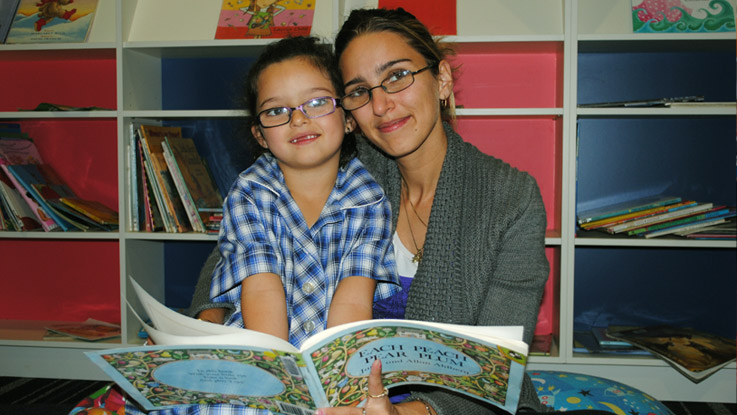
The real cost of public school getting beyond most disadvantaged families
Children are being advised to avoid certain subjects because of the expense while some parents are contemplating personal loans as vulnerable families struggle with the costs of attending public school according to the national education charity, The Smith Family.
In the run up to the new school year, The Smith Family has estimated ‘the real costs’ of attending public school – from uniforms, shoes and stationery through to the charges that are part of daily attendance and study – at upwards of $2000 for one child (at primary school) over a year.
At the same time the organisation has asked its frontline workers for their first-hand accounts of how struggling families juggle the costs of school.
According to The Smith Family’s CEO, Dr Lisa O’Brien, the real costs facing families – and the struggles they encounter – are alarming.
“The truth is that the cost of attending school is getting beyond many disadvantaged families,” said Dr O’Brien.
“Before your child even walks in the front gate the average parent is looking at spending more than $700 on uniforms, shoes and stationery – and that’s a conservative estimate based on the least expensive purchases at nationally accessible chain stores.
“But once in the gate, and depending on whether your child goes to primary or high school, parents encounter a whole new raft of expenses.
“Certain subjects – because of the materials involved – attract extra charges (eg: design and technology, home economics). Add on things like excursions and textbooks and the costs mount up.
“When children – increasingly at primary school – are also expected to have either a laptop or tablet and access to broadband at home, it’s no wonder many financially disadvantaged families can’t cope.
“We know that public schools, working within limited budgets, try and come up with inventive ways to help struggling families cope with expenses.
“But even with schools offering support to disadvantaged families through discretionary funds – limited pools of financial assistance to help offset costs – we estimate most families will need to spend upwards of $2000 annually for their child to receive a comprehensive public school education. And that’s just for one child.
“And if you’re at a school in a disadvantaged area – where many families are in the same situation – then those discretionary funds are soon over-subscribed leaving people with very limited support.
“The stories we hear from our frontline team about how people try to cope – or can’t – can be heart-breaking.
“Our workers tell us of young people, who show real aptitude and ability in certain subjects, being advised to pursue other streams of study because of the costs involved and the family’s inability to pay.
“They tell us of encountering parents contemplating personal loans and taking out new credit cards to try and manage costs.
“The inability of financially disadvantaged families to make a voluntary annual contribution at their school also has ramifications for their child’s education.
“As you would expect, public schools in well-off areas receive the vast majority of their voluntary contributions and charges. For schools in disadvantaged areas, the figure is much lower.
“Public schools in well-off areas can receive as much as 15 per cent of their annual income from parental contributions while for schools in disadvantaged communities the figure can be as low as 2 per cent.
“This has a direct impact on what the school can offer in terms of courses or extra-curricular activities. The tragedy is vulnerable kids – who are bright, enthusiastic and full of potential – are missing out on opportunities which are afforded their more advantaged peers.
“It’s surprising, but there has never been any national, comprehensive study to quantify and identify the costs of public education in Australia and assess the impact on families and the participation of children in schools.
“We’re calling for such research to be conducted to help governments, departments and community organisations deliver more targeted support.
“We’re hopeful that needs-based funding – which now has the support of federal, state and territory governments – will make a difference for families attending schools in disadvantaged areas. For example, by giving schools the funds they need to open up areas of study that have previously been off-limits to many students because of cost.
“Governments also need to keep a close eye on the financial barriers facing disadvantaged families and students as they attend public school and pursue sensitive policy decisions that improve access.
“In the meantime, the charitable sector is often the only thing that enables many disadvantaged families to fully participate in a comprehensive public school education,” said Dr O’Brien.
Media contact: Paul Andrews 0409 665 495
The Smith Family's Back to School Appeal
Right now thousands of children are heading back to school. But through no fault of their own, many of them start school already behind their classmates. They find it hard to participate in class like the others. They do not have the ongoing support they need to catch up. As each day passes it just gets worse. Their confidence erodes, leaving them isolated and full of self-doubt.
Please help lift their burden.
Media contacts:
Andrew Dickson | National Media Manager (National) - 0421 285 529 | andrew.dickson@thesmithfamily.com.au
Carla Horton | Senior Media Advisor (QLD & WA) - 0423 618 776 | carla.horton@thesmithfamily.com.au
Reid Jermyn | Media Advisor (VIC, SA & NT) - 0412 803 566 | reid.jermyn@thesmithfamily.com.au
Ben Chenoweth | Senior Media Advisor (NSW, ACT & TAS) - 0413 346 934 | ben.chenoweth@thesmithfamily.com.au
The Smith Family is a national children’s education charity that helps young Australians experiencing disadvantage to create better futures for themselves through harnessing the power of education. We partner with around 800 Australian schools and work with over 186,000 children and young people experiencing disadvantage access our education support programs to help them overcome. For more information, visit thesmithfamily.com.au
